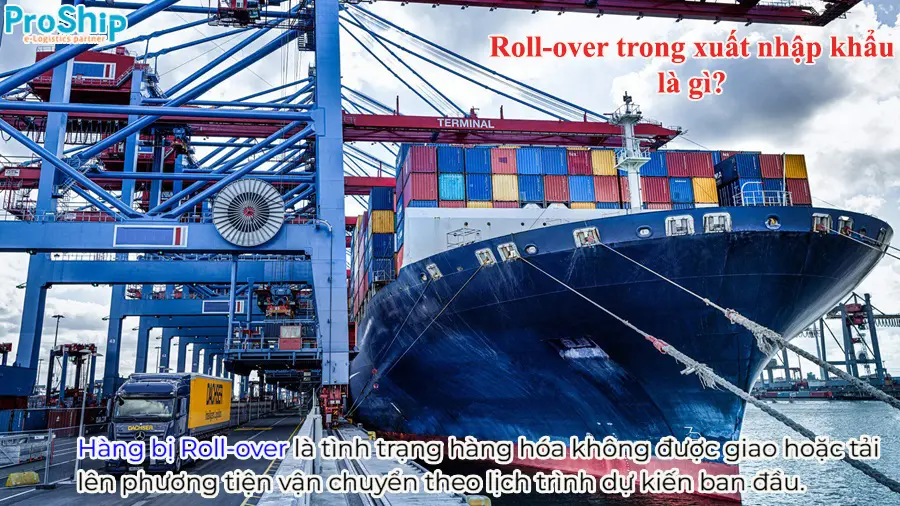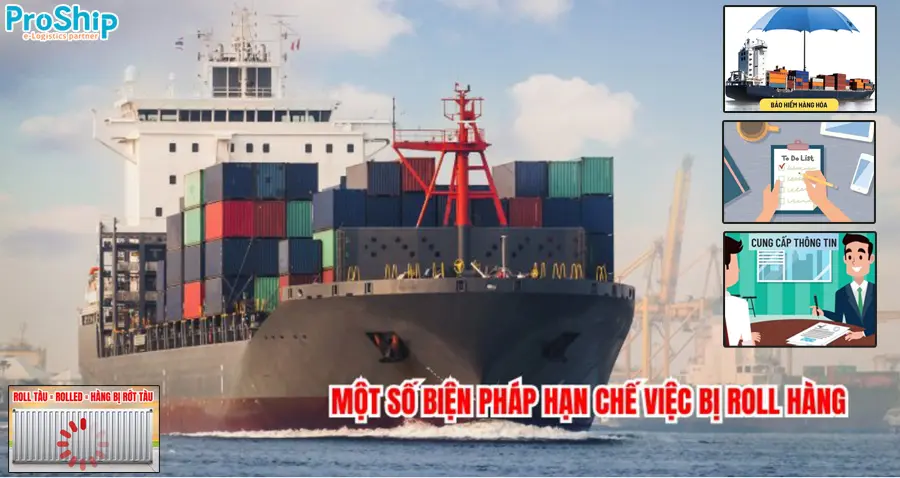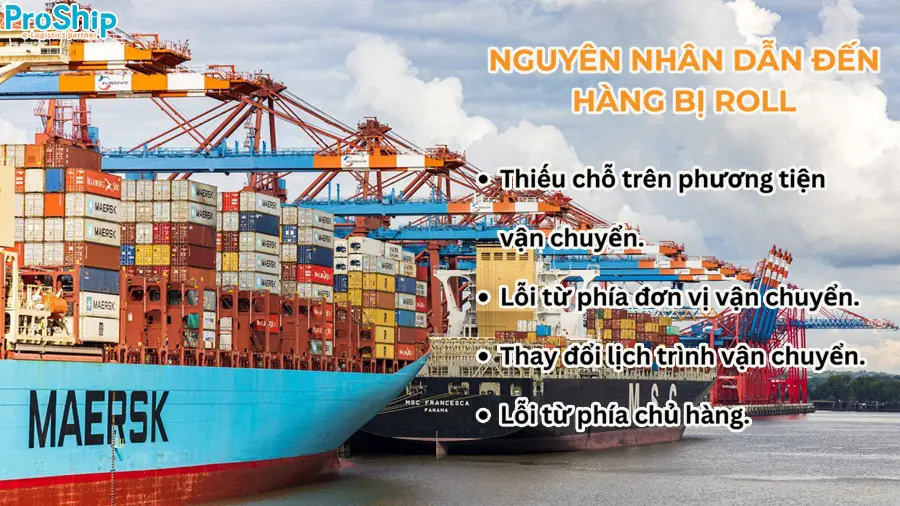x You are participating in the field of seafar transport and encounter many specialized terms like Roll-Ever?
x You want to know the cause of the roll-over goods? What will happen if the goods are roll-over in shipping?
X, if unfortunately, how will the roll be treated?
Proship.vn we will approve the following article content to answer the term Roll-Ever? How to handle and limit the situation of Roll-Over? The reason why the goods are rolled-over?
What is roll goods? What happens when the goods are roll-over?
The following is the knowledge of the concept and some things that will happen when the goods are roll-over:
What is Roll-over in import and export?
What is Roll-over? In import and export, goods are rolled as a situation where goods are not delivered or uploaded to transport vehicles according to the original schedule. More simply, the shipment will have to wait for a train, flight or other transportation to be transported to the destination.

What happens when the goods are roll-over?
If the goods have a roller due to a shipping company, the shipping company will automatically arrange the train soon. Costs incurred will be paid by the shipping company.
But if the row has a roll due to lack of documents, problems with customs procedures or failing to meet certain requirements, it will be charged incurred. The costs incurred due to roll sometimes more expensive than shipping costs.
container transport service best price
Tip how to limit roll-over
How to limit Roll-over? Proship has summarized news to share with the business how to limit the following Roll goods:
Provide accurate product information
Should provide accurate goods information to avoid Roll-Over:
- Provide adequate and accurate goods information, including goods name, quantity, size, weight, value, ...;
- Ensuring documents related to the shipment are fully and valid.
Track the status of goods
Regularly monitor the status of goods helps limit the roll:
- Closely monitor and close the status of goods during transportation;
- Contact the transport unit if there is any change in the schedule or goods status.
Make early transportation planning
If you want to avoid roll-to goods, you should plan early freight:
- Booking in advance with the transport unit to ensure there is room for the shipment;
- Determine the shipping time and choose the right option for the needs.

Choose a reputable transport unit
Working with a reputable transport unit to avoid roll-over:
- Should choose experienced and reputable transportation units;
- Learn carefully about the services and policies of the shipping unit before signing the contract.
Buy insurance for goods
Should buy goods insurance to limit Roll-Over:
- Goods insurance helps minimize transportation risks;
- Avoid transporting goods in peak season;
- Can use courier service (if necessary).
The best refrigerated container transport cost
Distinguishing Roll in logistics and in import and export
"Roll" in logistics and "roll" in import and export are two different terms. Details in the following table:
| Characteristic | Logistics | Import and export |
| Concept | Roll in logistics is a condition that is not delivered or uploaded to transport vehicles according to the original schedule. | Roll in import and export is the term just transferring the ownership of goods from the seller to the buyer. |
| Consequence |
|
|
| How to handle |
|
|
Instructions on how to handle situations when goods are rolled-over
Roll goods may be due to many reasons. Let's find out with Proship to have the best processing direction:
Determine the cause of the Roll-over
The reason why the goods are roll-over may be due to:
- Error of shipping lines:
The shipping company will be responsible for arranging the train earliest and announcing the new schedule via FWD Booking. FWD Booking will update a new schedule for shippers.
- Error from the shipping unit:
Error in the process of loading and unloading goods, or errors in shipping planning also leads to roll-over.
- Error from the owner:
Providing false, incomplete information about goods, or failing to complete the customs procedures on time, it also causes the goods to be rolled.
- Procedures or documents:
Shippers should contact FWD Booking to work with the shipping company and arrange a new train. At the same time, it is necessary to quickly handle the error of errors to avoid losing time and cost.
- Lack of places on vehicles
Is the most common cause of roll-over. Due to high transportation demand, especially in the peak season, the amount of goods that need to be transported can exceed the capacity of the vehicle.
- Change of transport schedule:
Due to objective factors such as weather, technical incidents, or changes in transport regulations, shipping schedules change, the goods are rolled down.

Roll-Over processing steps
Steps to handle roll-foring situations:
- Step 1 - Contact FWD Booking:
After knowing that the product is rolled, contact FWD Booking for specific instructions.
- Step 2 - Provide information:
Provide sufficient information about the shipment, including the number of booking, goods name, quantity, travel port, destination port, ...
- Step 3 - Work with the shipping company:
FWD Booking will work with the shipping company to arrange a new train for your shipment.
- Step 4 - Update new schedule:
FWD Booking will notify the new schedule to the shippers.
- Step 5 - Monitor the status of goods:
Closely monitor the status of the goods and contact FWD Booking or the shipping company if there is any change.
What is Roll-over in import and export as well as how to handle Roll-Over when shipping goods at sea is the central content that Proship Logistics wants to convey to you, exporters, imports this time. If you have any questions, contact us immediately through 0909 344 247 for advice, quotation of cheap multimodal transport services that your business has been interested.
